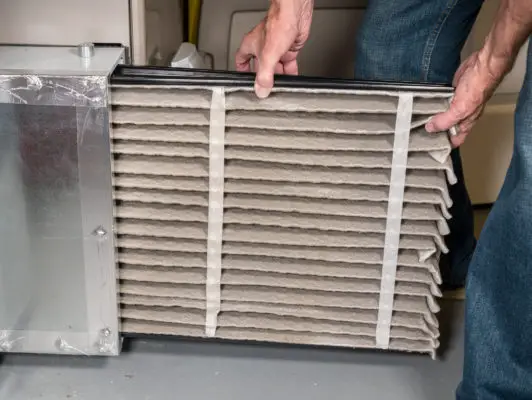The furnace filter is an essential component of your HVAC system. Although it may seem almost irrelevant, it is responsible for keeping your air clean and the other components of your HVAC system clean and running. Choosing the right furnace filter for your HVAC is just as important as knowing how to clean or change other parts of your HVAC system. If you do not have a furnace filter, purchase one today from a residential air filter supplier or have a custom furnace filter made for you.
Tips for Choosing the Right Furnace Filter:
Consider these 5 things when choosing a furnace filter:
Furnace Filter Size
The size of furnace filters is primarily determined by the furnace. The best method for determining the right size of your furnace filter is to check the old one. The size of the filter should be printed on one of the filter’s edges. If the filter size is not printed on the edge of the old filter, or if the old filter is the incorrect size, the right filter size may be printed on the furnace itself near the filter box.
Common Furnace Filter Sizes
- 16x20x1
- 20x20x1
- 16x25x1
- 20x25x1
Many furnace filters are 1 inch thick, while the maximum thickness is 6 inches.
Furnace Filter Type
The most common type of furnace air filter is the pleated paper/polyester filter These are effective at removing household dust and allergens and strike a decent mix between price and performance. In general, disposable fibreglass filters are less expensive, but also less effective and must be replaced more frequently. Permanent reusable filters are perhaps the most expensive to purchase, but as implied by their name, they have the longest lifespan. However, these filters must be periodically cleaned and washed, requiring more upkeep than disposable filters.
Filter MERV Ratings
The Minimum Efficiency Reporting Value (MERV) of a furnace filter is a measurement of how well it filters out airborne particles, how efficiently air flows through it, and how long it should last. The MERV scale assigns filter ratings between 1 and 16. The greater the value, the greater the removal of particles. A high MERV rating does not necessarily indicate that a filter is better for your HVAC system. The majority of residential systems use filters with a MERV rating between 1 and 12 to remove the most particles while allowing for optimum airflow. Filters having a MERV rating of 12 or above are typically utilized in commercial settings, such as laboratories and hospitals. Determine the highest MERV-rated filter that allows for maximum airflow in your system by consulting the manual for your furnace.
Household Needs
Your family’s health may necessitate the usage of more powerful filters. It is not uncommon for 1 to 2-inch filters to require monthly change due to allergen-causing particles as small as 1 micron. If you want to provide your family’s most vulnerable members with cleaner air, you should choose furnace filters that are at least three inches thick. It is necessary to replace these filters several times a year, removing more airborne particles.
Filter Price
Cheap filters will not help you maintain your indoor air as clean as it should be, especially if you care about your indoor air quality (which you should). In addition, although low-quality filters are affordable, they must be replaced significantly more frequently than filters of higher quality. Investing in a higher-priced, higher-quality filter will help you maintain your HVAC system’s best performance. Moreso, the more expensive model will help you avoid breathing in mould, mildew, and germs in your home, and you won’t have to change the filter as frequently.
How To Change Furnace Filters
It’s not always easy to find the furnace filter. Check the ductwork if you can’t find the filter. The furnace’s heating duct is near or at the top, and the cold air return is towards the bottom, where the filter box is likely to be. This is where the filter box will be. Following these procedures will help you replace the furnace filter. Depending on the type of furnace you have, some of these processes may be different.

- If you can’t find the filter box door, look for a notch where the filter slides in and out.
- Remove the old filter and throw it away from here.
- Take a look at the airflow arrows on your new filter. Using the arrows, you can tell which way the filter should be positioned.
- Slide the furnace filter into the airbox while keeping the arrows pointing towards the furnace.
Conclusion
Now you know how to choose and change your furnace filters. If you need further assistance, please contact Custom Filters Direct, on online custom filters supplier!


